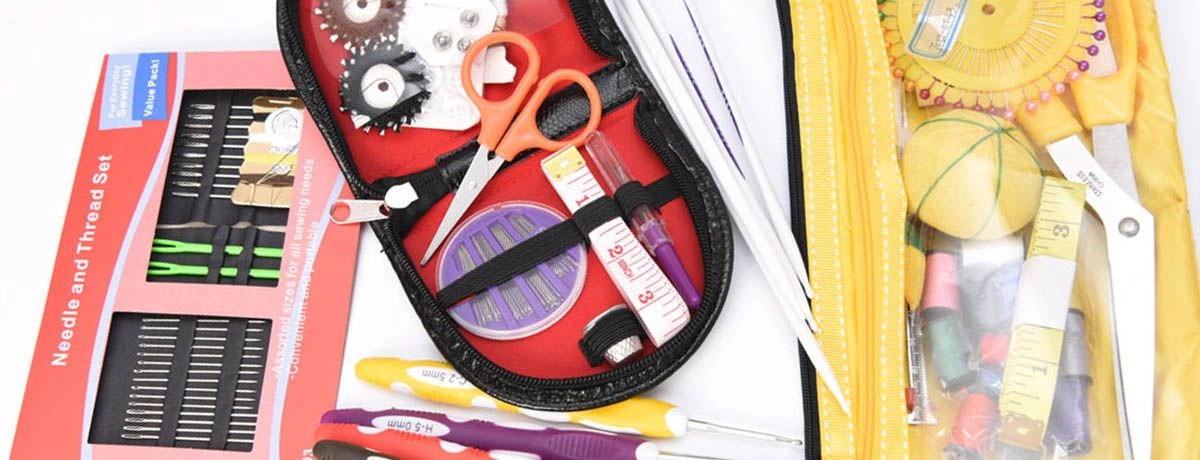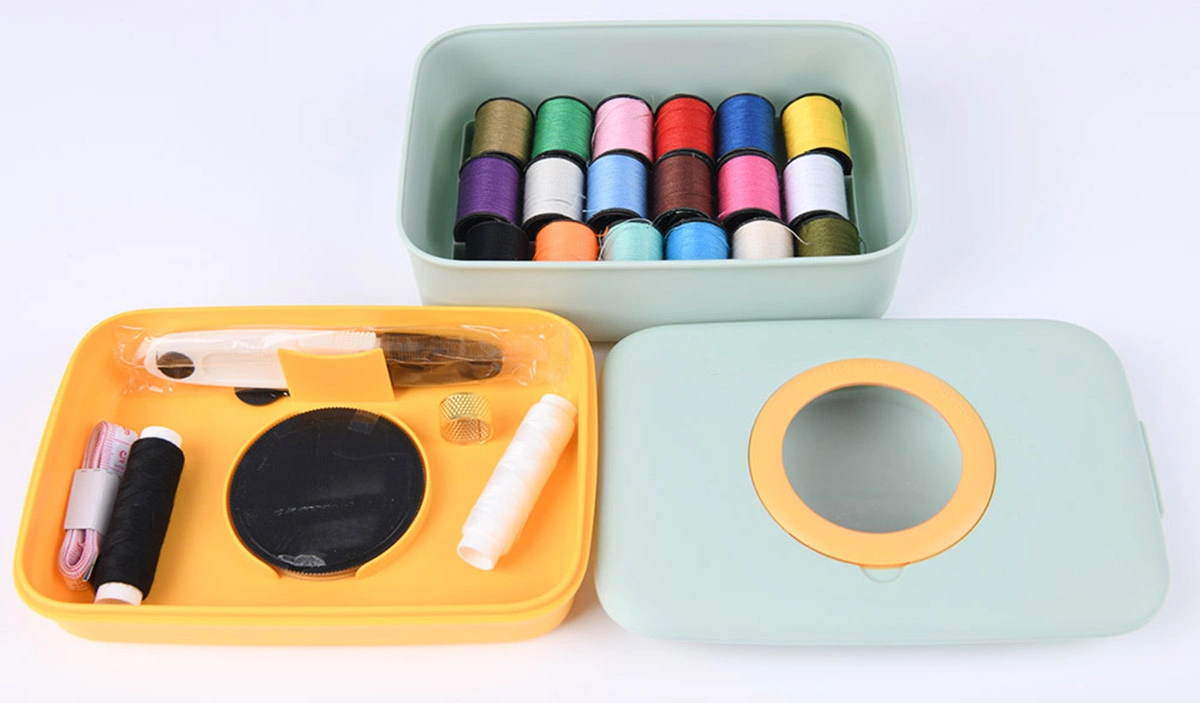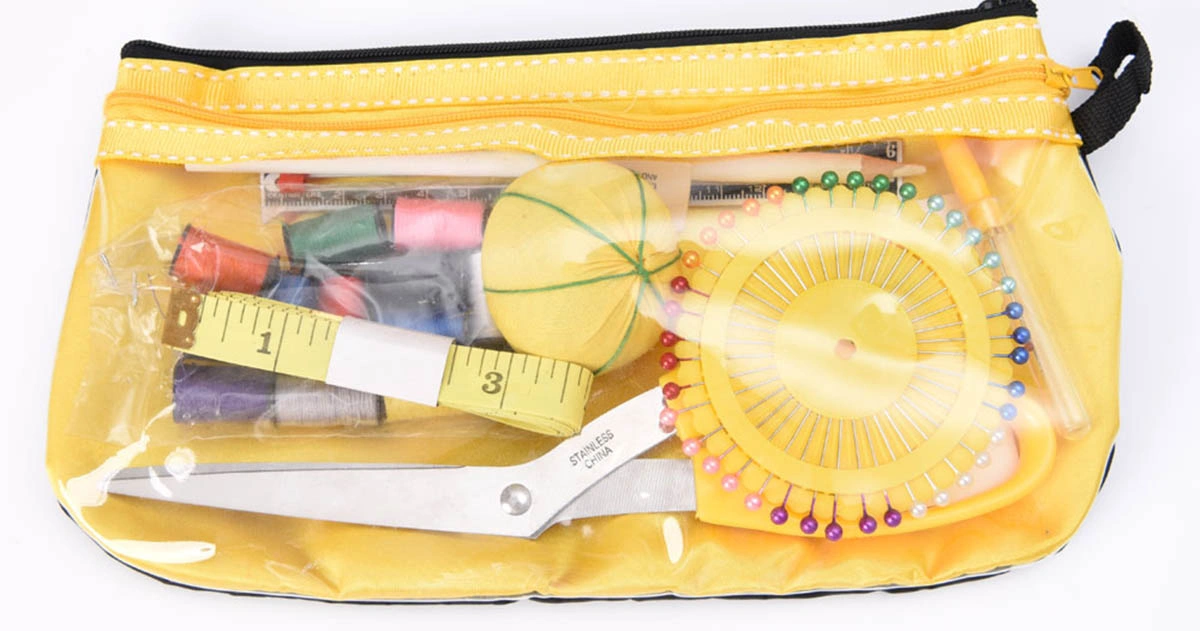Can You Take Sewing Needles on a Plane? Essential Travel Guidelines

Can you take sewing needles on a plane? Yes, you can. According to TSA guidelines, sewing needles are allowed in both carry-on and checked baggage. In this article, we will guide you through TSA regulations, packing tips, and what to do if any items are confiscated, ensuring a smooth trip with your sewing tools.
Key Takeaways
-
Sewing needles and knitting tools are generally allowed in both carry-on and checked baggage, but cutting tools must be stored in checked luggage.
-
Packing sewing items securely in protective cases or organized bags helps prevent injury and keeps tools intact during transport.
-
TSA officers have the final say on security decisions, so being courteous and aware of guidelines can lead to a smoother screening process.
TSA Guidelines for Sewing Needles
Navigating TSA guidelines can feel like threading a needle in turbulence. According to TSA regulations, sewing needles are permitted in both carry-on and checked luggage. Familiarizing yourself with these rules before you fly helps avoid unpleasant surprises at the security checkpoint.
For those gray areas not explicitly covered in the guidelines, the TSA offers an AskTSA service where travelers can get specific answers about their items. This can be particularly useful for unique or less common sewing tools that you might be wondering about.
Even with clear guidelines, tsa agents may interpret the rules differently. Their discretion determines whether an item can pass through security, so being courteous and cooperative is wise to ensure a positive outcome.
Packing Sewing Items Safely

Packing your sewing items properly ensures your tools arrive intact and ready for use. To prevent injury and loss, sewing needles and small scissors should be securely wrapped before placing them in your luggage. This protects both you and the baggage handlers from potential harm.
Using a protective case for your sewing items and sewing related items can further minimize the risk of injury during transport. Foldable plastic or cloth bags are excellent for keeping everything organized and preventing items from getting lost. Labeling or color-coding these bags can also make it easier to find your tools quickly when you need them.
Packing knitting needles securely helps avoid accidents during travel. You may place your knitting needles in a fabric case or box to ensure they are sheathed and won’t poke through your luggage. These steps help prevent injury and keep your tools in excellent condition.
Carry On vs. Checked Baggage
Deciding whether to place your sewing items in carry-on or checked baggage can be a bit of a balancing act. Here are the guidelines:
-
Knitting needles and needlepoint tools can generally be carried in either carry-on or checked baggage.
-
Cutting tools with blades must be stored in checked luggage.
-
Scissors smaller than 4 inches are permitted in carry-on luggage, making them a convenient choice for in-flight projects.
When traveling with sewing tools:
-
Circular thread cutters and other bladed tools need to be placed in checked luggage to comply with security regulations.
-
Blunt-tipped scissors are often more acceptable in carry-on baggage and can be a good alternative for those who prefer to keep their tools with them.
-
Adjusting your sewing machine settings before travel can help you comply with security protocols.
Storing sewing needles securely in checked baggage is advisable to prevent them from being classified as weapons. By carefully considering what to pack where, you can ensure a smoother security screening process and a more enjoyable flight.
Traveling with Needlepoint Tools

Traveling with needlepoint tools in carry can be a breeze if you know the rules. Generally, knitting needles and needlepoint tools are allowed in both carry-on and checked luggage. This flexibility means you can keep your projects close at hand or safely stowed away, depending on your preference.
Scissors under 4 inches in length are also permitted in carry-on bags, making them a convenient addition to your small sewing kit. However, always remember to check the specific regulations of your airline and destination to ensure compliance.
Packing a small sewing kit with essential items can make your trip more enjoyable and productive. Having a few needles, thread, and a compact pair of scissors can be a lifesaver during long trips.
Knitting Needles and Crochet Hooks
Knitting needles and crochet hooks are generally allowed in both carry-on and checked luggage according to TSA rules, allowing you to enjoy your knitting projects during the flight.
To avoid any security issues, it’s best to pack these items properly. Place your knitting needles in a secure case or wrap them in fabric to prevent them from poking through your luggage. Similarly, crochet hooks should be stored in a way that minimizes the risk of injury or damage.
Remember that tools that contain blades, like circular thread cutters or small scissors, must be checked at the pivot point, along with any other cutter. Following these guidelines ensures a smooth and hassle-free travel experience with your sharp objects knitting and crochet projects.
Tips for Sewing on Long Haul Flights
Sewing on long-haul flights can be a delightful way to pass the time, but it’s essential to pack wisely. Bringing only essential sewing tools minimizes clutter and ensures compliance with carry-on restrictions. A small sewing kit with needles, thread, and scissors smaller than 4 inches is usually adequate.
If you plan to bring a portable sewing machine on a plane, consider the following:
-
Ensure the machine complies with airline size and weight regulations.
-
Choose a lightweight, portable machine to enhance your sewing experience.
-
Make sure the machine is manageable within the confines of your seat and overhead bin.
Organize your tools and project before the planes board flight to maximize your sewing time while flying. This way, you can focus on your creativity without the hassle of rummaging through your bag mid-flight.
What to Do if Items Are Confiscated
Remain calm and polite if TSA confiscates any items. Ask for clarification on why the item was taken to better understand TSA regulations and avoid similar issues in the future. If you need to leave, ensure you have all necessary information.
Document the confiscated item and any provided paperwork for future reference. Unfortunately, once an article is confiscated, there are no options to reclaim it, so it’s best to contact your airline for further guidance regarding potentially hazardous materials.
If you believe the confiscation was incorrect, you can ask about the process for contesting the decision. Additionally, contacting TSA customer service after the incident can provide further support and information.
Final Decision Rests with TSA Officer
The TSA officer at the checkpoint has the final say on whether your items can pass through security. While guidelines provide a general framework, the officer’s discretion plays a crucial role in the final decision.
Even if an item is usually permitted, it may be restricted if it raises security concerns or triggers an alarm during screening. Respecting the discretionary decisions of TSA officers can make the security process smoother for everyone.
By being prepare and informed, you can minimize the chances of your sewing items being blocked and ensure a more pleasant travel experience in Canada.
Summary
Traveling with sewing needles and related tools doesn’t have to be a daunting task. By understanding TSA guidelines, packing your items safely, and knowing the difference between carry-on and checked baggage, you can ensure a smooth journey. Remember, the final decision rests with the TSA officer, so always be prepared for any situation.
With these tips and guidelines, you can confidently travel with your sewing projects and enjoy a creative and productive trip. Safe travels and happy sewing!
Frequently Asked Questions
Can I bring my knitting needles in my carry-on luggage?
Absolutely, you can bring your knitting needles in your carry-on luggage since TSA rules typically allow them. Just double-check your airline's specific policies to be safe!
Are circular thread cutters permitted in carry-on bags?
Circular thread cutters are not allowed in carry-on bags and should be packed in checked luggage instead.
What should I do if my sewing items are confiscated by TSA?
If your sewing items get confiscated by TSA, stay calm and ask for clarification on the rules. Make sure to note what was taken and reach out to TSA customer service for more guidance.
Can I bring small scissors in my carry-on luggage?
Absolutely, you can bring scissors that are smaller than 4 inches in your carry-on luggage. Just double-check the size to make your travel smoother!
Are there any special considerations for traveling with a portable sewing machine?
Yes, it's crucial to make sure your portable sewing machine meets airline size and weight regulations, and that it fits comfortably in your overhead bin or under your seat. Always check with your airline ahead of time for any specific rules!
Contact MH
MH offer traveling sewing kits, feel free to reach out to us for more details or inquiries. We're here to help!


